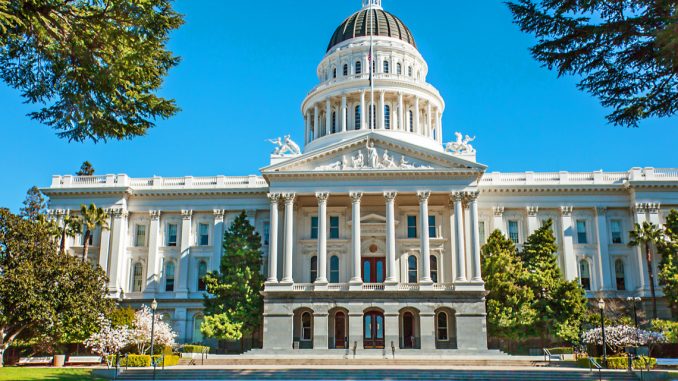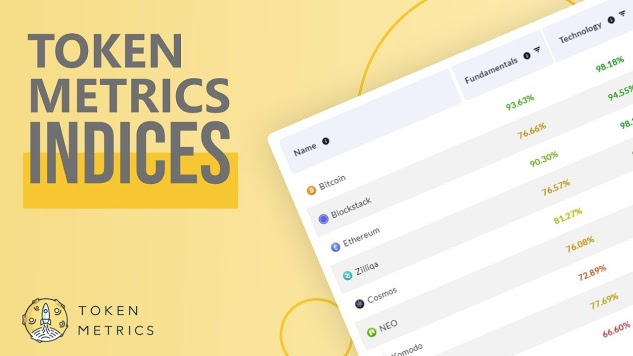
U.S. regulation of crypto assets is an ongoing issue for current politicians. This month, Capitol Hill played host to a watershed moment for crypto adoption in the U.S. Six executives from prominent crypto firms set out to demystify various aspects of their industry. Here’s the round up.
Californian congresswoman Maxine Waters found herself chairing the hearing, which lasted a gruelling five hours. Throughout, crypto execs fought off a decent grilling from politicians.
At the hearing, the crypto executives that testified included Charles Cascarilla, Brian Brooks, Alesia Jeanne Haas, Denelle Dixon, Sam Bankman-Fried, and Jeremy Allaire.
Brooks is a former acting comptroller of the currency in the United States. He had a brief stint as CEO of Binance.US before becoming CEO of Bitfury, a position he currently holds.
In answering a question as to whether he viewed cryptocurrency as a security, Brooks responded, “We don’t know authoritatively what’s a security and what isn’t, because no authority will tell us. But what we can do, at least, is we can tell you the difference between an R-rated asset and a PG-rated asset, and people can make their risk tolerance judgments.”
Coinbase & FTX: We protect our customers
Alesia Jeanne Haas previously served as vice-president of GE Healthcare Financial Services, was a director at Merrill Lynch Global Private Equity, and served as chief financial officer at Sculptor Capital Management. She sits on the board of ANGI Homeservices and Vimeo.
Haas said of Coinbase, “We now securely store 12% of the world’s crypto on our platform. This is across over 150 asset types, and we offer customers the opportunity to earn, sell, send, and to receive and buy more than 100 assets on our platform.”
Haas’ emphasis lay around the utility of crypto and how Coinbase is driving that next phase of crypto adoption.
“We serve more than 73 million customers globally, including 10,000 institutions and 185,000 application developers. Importantly, nearly 50% of our transacting customers are doing something other than buying and selling crypto, which indicates to us that crypto has moved past its initial investment phase, and we are now in the long-expected utility phase of this ecosystem.”
Haas clarified how Coinbase protects its customers in the event of a hack and how the company mitigates the risk of criminal activity through measures designed to prevent criminal activity (KYC/AML).
Hot Wallets vs Cold Wallets
Less than 2% of Coinbase’s holdings are held in hot wallets, and most are stored in cold wallets. As a result, direct attacks on cold wallets that are not on the platform constitute most of the risk. Hot wallets are always online, which increases the likelihood of a security breach. Coinbase reimburses customers in the event of a hack, but not in the event of an account takeover.
Sam Bankman-Fried holds a Ph.D. in Physics from the Massachusetts Institute of Technology and currently serves as the CEO of Alameda Research and cryptocurrency exchange FTX. Bankman-Fried says in relation to cooperation of FTX with law enforcement, “We are responsive to law enforcement inquiries constantly. Around this, we are helpful whenever we can be with the terms of information related to FTX and our users.”
For politicians, are these just words? Is U.S. regulation a realistic goal?
Open networks and digital currency
Denelle Dixon has held senior positions at Yahoo and Mozilla Corporation and currently heads up the Stellar Development Foundation as chief executive officer. The company manages the codebase for Stellar, an open-source network for currencies and payments. The network is used to create, send and trade digital forms of money.
Dixon said of her time at Mozilla, “… I spent a lot of my time advocating, among other things, openness and interoperability in web technologies. It’s those same policy priorities that drew me to blockchain… Stellar is an open, permissionless decentralized network that is optimized for payments.”
Pro-Regulation
Charles Cascarilla previously served as an analyst for Bank of America, a financial analyst for Goldman Sachs, and a Portfolio Manager at Claiborne Capital Management. He also heads up Paxos, which is a company focused on the movement of currency digitally.
Cascarilla said, “We have an opportunity to build a more efficient and effective financial system. We believe a primary prudential state or federal regulator should regulate digital asset companies and their products… Regulation must ensure that customer assets are held segregated from the company’s balance sheet for stablecoins.”
Jeremy Allaire served as co-founder and chief technology officer of Allaire Corporation and Macromedia. He currently serves as co-founder, chairman, and CEO of Circle. Circle is the second-largest issuer of stablecoins in the world.
Allaire is quoted as saying in a June 2021 CNBC interview, “The internet needs native forms of currency and native forms of digital money.”
Circle looks to integrate everyday stable currencies like the U.S. dollar with the benefits of “global reach, nearly infinite settlement,” and notably low transaction costs.
Maxine Waters addressed Cascarilla and Paxos’s partnership with Meta. They collaborated for the Novi pilot in parts of the U.S. and Guatemala.
Meta is the company behind Facebook, WhatsApp, and Instagram, chaired by billionaire Mark Zuckerberg. Novi is a cryptocurrency project spearheaded by Meta. The project’s pilot phase seeks to allow cheap and fast remittances between Guatemala and a limited number of U.S. states. Money to be transferred must be loaded into a digital Novi wallet. The currency gets converted to a cryptocurrency. The cryptocurrency used is called a Pax Dollar (USDP), which is a type of stablecoin.
A stablecoin is a digital asset whose value is pegged to an external asset, which, in the case of the Pax Dollar, is the U.S. dollar. For a person to send a remittance using Novi, the currency they are sending must first get converted to USDP before it is sent.
The Novi wallet converts the cryptocurrency in the sender’s or receiver’s wallet into a local currency for withdrawal or deposit into a local bank.
Waters was especially concerned about Meta’s approximately three billion users potentially being included in Meta’s project. The potential of the U.S. dollar’s status as a global reserve currency might be threatened by the USDP.
Cascarillas noted, “Novi would be best positioned to talk about their plans to expand it. But right now, they’re in a pilot phase. It’s just the U.S. and Guatemala; it’s quite limited in scope and size.”
U.S. regulation and Web 3.0: The starting point
Patrick McHenry, representative for North Carolina’s tenth district also spoke. With U.S. regulation as a background, he established where blockchain and cryptocurrency fit into the evolution of the internet.
“Let’s talk about where the internet was, where it’s come to where it’s going. Originally, the internet was a read-only format. In essence, we’re consuming information. And then [there are] additional layers that we placed on it, [and] it became much more interactive. But, counterintuitively, it’s much more interactive but much more centralized in Web 1.0, Web 2.0. What we’re hearing now is Web 3.0. policymakers need to understand the nature of Web 3.0.”
Brooks noted, “I think that’s critical to understanding what we’re all trying to build here. So, the characteristic of Web 2.0 (and people will remember their original AOL account) was an ability to look in a curated walled garden at a set of content. It was not interactive but was presented to you on AOL. This is the same way that Time Magazine used to show you the articles they wanted you to see inside of their magazine. You just see it on a screen.
“The innovation of Web 2.0 was that suddenly you can not only read content, but you could also write content. And the reason for the centralization of the internet, of course, was that all of that activity was being monetized by a very small number of companies. What makes Web 3.0 different is the ability to own the actual network. And that’s what crypto assets themselves represent is an ownership stake in an underlying network.”
Risks and rewards: The crypto equation
Haas, as CFO of Coinbase answered Representative Peter Sessions from Texas on risk mitigation. “On the Coinbase platform, we do KYC, but also when we onboard our assets. We have a robust assessment of each of those assets. One way we look at fraud is when we list an asset, to make sure it’s not a fraudulent asset through our market rules.”
Representative Edwin Perlmutter quizzed Bankman-Fried. In reply, Bankman-Fried said they have a “bunch of international licenses in the United States. We are participating in that system you referenced with the money transmitter. The money service business license is in addition to that. However, we are also licensed by the CFTC. We have a DCO, a DCM, and another licensure from them through FTX us derivatives. We look forward to continuing to work with them to build out our products.”
It seems U.S. regulation doesn’t reach everywhere. Bankman-Fried admitted that FTX’s spot-trading products do not operate under licensure.
U.S. Regulation and Terrorism
Alex Mooney, a representative of West Virginia, asked Bankman-Fried whether “rogue and frankly murderous autocratic regimes” could use FTX to evade U.S. sanctions.
Bankman-Fried claimed, “We run sanctions checks on all of our users we can do Know Your Customer surveillance on them. In addition to that, we conduct surveillance on the blockchain and fiat assets that transfer into and out of our system.”
Mooney has been at the coalface of financial regulation, having served on the security committee on Financial Services. While appreciative of the innovation in the cryptocurrency sector, his focus was on its potential to fund terrorists. He cited recent cryptocurrency donations made to Hamas.
“First, what are exchanges doing today to both ensure that consumers are protected from hacking and theft? And prevent bad actors such as Hamas and other terrorist organizations from accessing cryptocurrency markets?”
Bankman-Fried responded, “We work cooperatively with law enforcement here in the United States and globally. On you tracking down any bad actors, we are in constant communication.”
U.S. regulation: Key takeaways
This hearing seemed to fortify the notion that crypto is no longer a wild west in the U.S.
U.S. Regulation in a more robust form is in the mail. But there’s no doubt that U.S. regulation of crypto assets is an ongoing issue.
Tom Emmer, a U.S. representative from Minnesota, said, “Again, I want to thank the witnesses for being here. I hope this is the first of many of these discussions we have as Congress tries to put together a thoughtful, light-touch guidance framework for the industry.”
Disclaimer
All the information contained on our website is published in good faith and for general information purposes only. Any action the reader takes upon the information found on our website is strictly at their own risk.





Be the first to comment